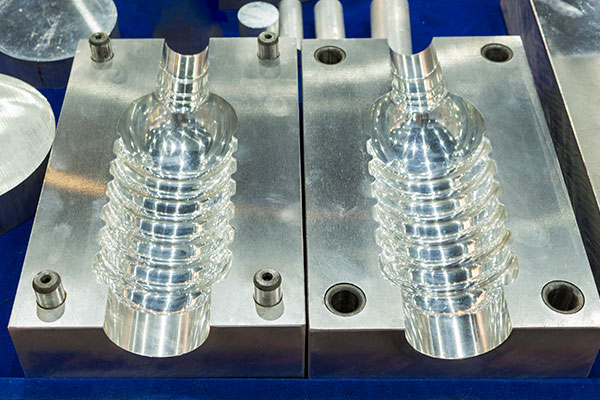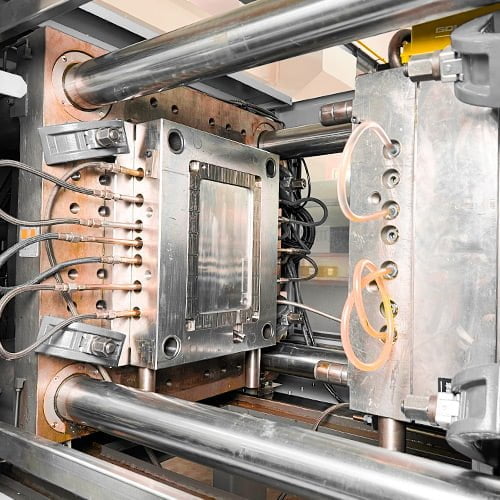The Future of Plastic Shot Molding: Fads and Innovations to Enjoy
As the plastic shot molding industry develops, a number of crucial fads are arising that assurance to improve its landscape. Automation and smart manufacturing techniques are readied to improve efficiency, while the shift in the direction of lasting products shows an expanding ecological awareness. Innovations in 3D printing are leading the method for unmatched style versatility. These innovations additionally bring forth obstacles that need cautious consideration. Understanding just how these components will certainly communicate and influence future techniques is critical for stakeholders aiming to browse this transformative period effectively.
Automation and Smart Production
As the plastic injection molding sector develops, automation and smart production are taking spotlight, changing manufacturing processes - Plastic Injection Molding. The combination of advanced technologies such as robotics, IoT (Net of Things), and fabricated intelligence is making it possible for makers to enhance effectiveness, reduce functional costs, and enhance item high quality. Automated systems simplify process, decreasing hands-on treatment and increasing throughput, which is crucial in meeting the increasing need for rapid manufacturing cycles
Smart manufacturing innovations promote real-time monitoring and information evaluation, allowing business to maximize machine performance and forecast upkeep needs. This positive strategy not only lessens downtime yet also extends the life expectancy of tools. The use of collaborative robots, or cobots, boosts the versatility of manufacturing lines, making it possible for employees and machines to operate side by side safely and efficiently.
The adoption of automation in plastic injection molding is not simply a pattern however a calculated imperative for businesses aiming to remain competitive in a global market. By harnessing these technologies, manufacturers can achieve higher accuracy, lower waste, and adjust quickly to altering client demands, positioning themselves for lasting development in a significantly automatic future.
Sustainable Materials and Practices
The press in the direction of automation and wise production has led the way for a better focus on sustainable materials and techniques within the plastic shot molding market. Companies are increasingly looking for green options to conventional petroleum-based plastics, resulting in the adoption of recycled and bio-based materials. These sustainable products not only reduce ecological effect but additionally line up with consumer need for greener items.

Additionally, partnership in between suppliers, material suppliers, and ecological companies is fostering advancement in the growth of sustainable products that fulfill efficiency criteria without endangering high quality. As policies around plastic use come to be more stringent, the industry is positioned to adapt by accepting these lasting methods, making sure long-lasting feasibility and lowering dependence on non-renewable resources. The integration of sustainability right into plastic shot molding is not merely a trend; it is coming to be a vital part of company responsibility and functional excellence.
Advances in 3D Printing
Current innovations in 3D printing technology are substantially changing the landscape of plastic injection molding. The assimilation of additive manufacturing processes permits the quick prototyping of complicated geometries that were as soon as difficult or impossible to accomplish through typical techniques - Plastic Injection Molding. This ability not only increases product advancement cycles but likewise reduces product waste, aligning with the growing need for sustainable production techniques
Additionally, the emergence of crossbreed production techniques, which integrate 3D printing and shot molding, provides makers the ability to produce complex designs while preserving the performance of mass production. This technique makes it possible for the production of personalized components customized to specific client needs without compromising the rate and scalability that injection molding offers.
Furthermore, innovations in materials, such as high-performance polymers and click now composites particularly created for 3D printing, are boosting the practical capacities of printed components. These materials can stand up to better stress and exhibit improved thermal residential properties, making them ideal for even more requiring applications.
As 3D printing remains to develop, its combination into plastic injection molding processes guarantees to improve efficiency, minimize expenses, and foster advancement in product style, positioning producers to better satisfy the challenges of a competitive market.
Data Analytics and IoT Integration
Data analytics and the assimilation of the Internet of Points (IoT) are changing plastic injection molding by providing makers visit with unmatched understandings into their operations. By leveraging real-time data accumulated from interconnected devices and sensors, makers can keep an eye on efficiency metrics, recognize inadequacies, and maximize manufacturing procedures. This data-driven strategy promotes anticipating maintenance, lowering downtime and prolonging equipment lifespan.
Additionally, IoT combination enables enhanced quality assurance. By continually tracking variables such as pressure, cycle, and temperature times, makers can swiftly detect inconsistencies from developed specifications and make adjustments in actual time. This not only boosts product uniformity however also minimizes waste and scrap rates.
The blend of data analytics and IoT innovations also encourages manufacturers to take on more active production methods. With accessibility to extensive information analytics, organizations can respond to market needs with greater versatility, readjusting production routines and configurations as needed. This flexibility is important in a quickly transforming manufacturing landscape.

Personalization and Layout Flexibility
Exactly how can customization and layout versatility enhance the competition of plastic injection molding? Customization permits makers to meet details client needs, suiting special dimensions, forms, and performances that standard items may not accomplish.
Developments in design innovations, such as computer-aided design (CAD) and quick prototyping, further strengthen this pattern. These devices allow developers to create complicated geometries and intricate patterns, which can be effortlessly integrated into the manufacturing process. As an outcome, manufacturers can respond promptly to changing customer choices and market demands.
In addition, the implementation of modular tooling systems improves layout flexibility, permitting for quicker modifications in between different product styles without extensive downtime. This versatility can cause reduced lead times and lower manufacturing prices, making companies a lot more dexterous and competitive. Inevitably, embracing customization and style adaptability in plastic shot molding not just boosts product offerings yet also strengthens market positioning in an ever-evolving landscape.
Final Thought
The future of plastic shot molding is defined by considerable developments in automation, sustainable practices, and cutting-edge products. Personalization with modular tooling and rapid prototyping will make it possible for suppliers to stay receptive and competitive to the dynamic needs of the market.

The future of plastic shot molding is identified by significant developments in automation, lasting techniques, and cutting-edge materials.
Comments on “Why Plastic Injection Molding Is Vital for Precision and Longevity”